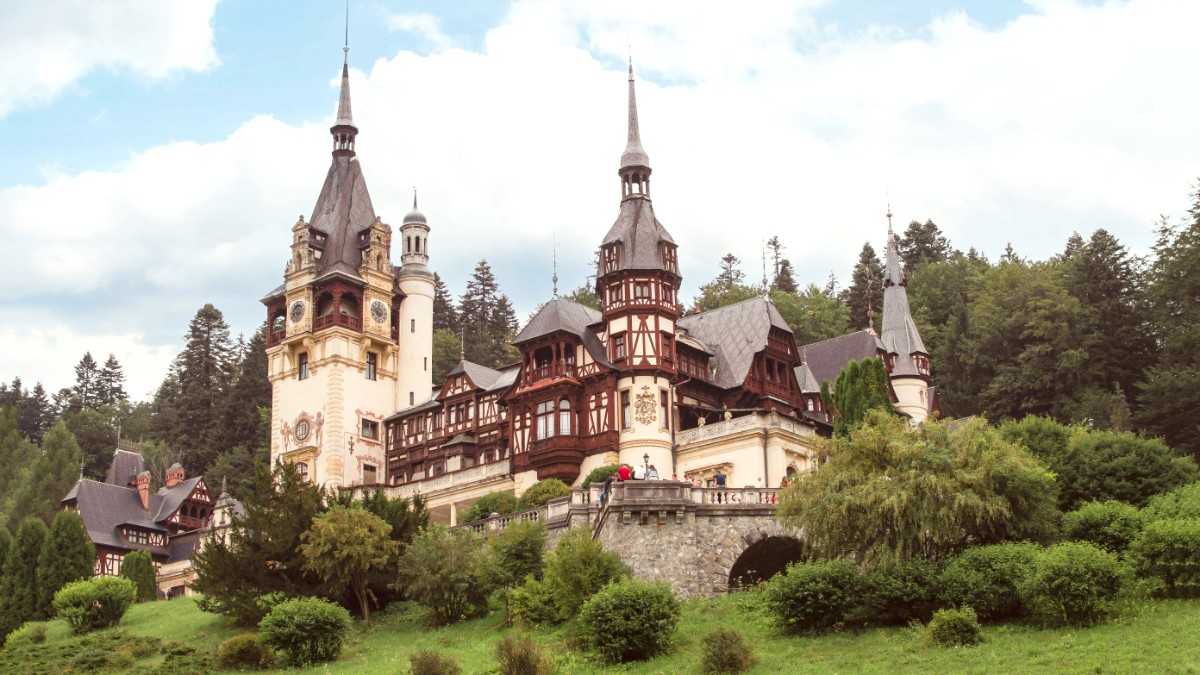
Transylvania, Romania
Climate patterns throughout the year vary. Winter brings cold temperatures and significant snowfall, ideal for snow sports. Spring temperatures rise, snow melts, revealing blooming flora. This season can be rainy.
Summer features warm and pleasant conditions, a prime time for hiking and outdoor activities. Occasional thunderstorms occur. Autumn offers excellent hiking conditions with fewer crowds. Tree colors against the mountains make a beautiful setting.
High season, shoulder season, and low season analysis:
Visitor numbers vary across the year, with peak activity during winter and summer. Shoulder seasons present fewer crowds.
December - March
Best winter sports conditions. Festive town atmosphere with full tourist operations. Snow activities a main draw.
Crowds at attractions and cable car stations, longer queues. Peak prices for accommodation and activities. Restaurants fill quickly.
July - August
Warm weather for all outdoor activities. Long daylight for extensive trail and attraction exploration.
Town can get crowded, especially weekends. Accommodation prices may be higher. Popular hiking trails see many visitors.
April - June (excl. Easter), Sep - Nov
Fewer crowds, relaxed visit. Lower accommodation prices. Pleasant temperatures for walking and hiking. More local feel.
Early spring may have snow on trails. Some facilities might have reduced hours. Weather can be unpredictable.
Mountain weather in Sinaia changes rapidly at any time of year. Be ready for sudden temperature drops, rain, or snow, even during summer, specifically at higher altitudes.
Thunderstorms are common in summer afternoons. They often bring a refreshing coolness. Always check the forecast before heading into the mountains. Conditions at the base can differ greatly from higher elevations.
Carry appropriate layers regardless of the season, for sudden changes.
Consult the weather forecast before any mountain activity.
Temperatures at higher elevations are significantly cooler.
Be prepared for wet weather during spring and autumn.
Even in winter, mountain sun can be intense. Sun protection is a good idea.
Romania is a member of the European Union (EU). While not yet fully integrated into the Schengen Area for border-free travel, it applies most of the Schengen rules.
Visa types and application processes for different nationalities.
Required documentation for entry to Romania.
Romania uses its own currency, the Leu. Its value and handling simplify your trip.
Budget Traveler: 30-50 EUR (145-245 RON)
Accommodation: 15-25 EUR (hostel dorm/basic guesthouse). Food: 10-15 EUR (street food, groceries, budget eateries). Transportation: 2-5 EUR (public transport, walking). Activities: 5-10 EUR (free attractions, limited paid entries).
Price ranges per night.
Hostel dorm: 60-120 RON (12-25 EUR). Budget guesthouse: 150-250 RON (30-50 EUR).
Mid-range hotel: 250-500 RON (50-100 EUR). Luxury hotel: 500-1500+ RON (100-300+ EUR).
Typical meal costs.
Local pastry/snack: 5-15 RON (1-3 EUR). Street food: 15-30 RON (3-6 EUR).
Budget restaurant meal: 30-60 RON (6-12 EUR). Mid-range: 60-120 RON (12-25 EUR). Fine dining: 150+ RON (30+ EUR).
Costs for getting around and sightseeing.
Local bus: 3-5 RON. Train Bucharest-Sinaia: 30-60 RON.
Peleș Castle: 50-70 RON. Pelisor Castle: 30-40 RON. Cable car return: 80-170 RON.
| Service | Expectation | Amount |
|---|---|---|
| Restaurants | For good service, check if service charge included. | 10% standard. |
| Taxis | Customary to round up fare. | 5-10% of total. |
| Hotels (porters/housekeeping) | For services rendered. | 5-10 RON. |
No specific vaccinations are needed for Romania entry. Staying up-to-date on routine vaccinations is always recommended.
Reduce risk with bottled water, hand hygiene, caution with street food.
Wear long sleeves/pants, use insect repellent, check body after outdoor activities.
Cold weather worsens conditions. Bring medications and warm clothing.
Sunburn/Dehydration:
Sun exposure can be intense, especially at higher altitudes. Apply sunscreen (SPF 30+), wear a hat, stay hydrated.
Mountain Sickness: Sinaia not at extreme altitude, but higher trails can induce mild sickness. Ascend gradually, stay hydrated, recognize symptoms.
Consult your doctor 4-6 weeks before for personalized health needs.
Dial 112 for all emergencies (police, ambulance, fire) throughout Romania.
Sinaia has a local hospital (Spitalul Orasenesc Sinaia). Private clinics and pharmacies also operate. Serious cases may need transfer to Brașov/Bucharest.
Widely available (green cross sign). Many pharmacists speak English, offer advice for minor ailments, common over-the-counter medications.
Sinaia generally ranks as a safe town with a low crime rate.
Romania is in an active seismic zone. Minor tremors occur; severe earthquakes are rare. Buildings are constructed to withstand seismic activity.
Winter: avalanche risks in higher mountains after heavy snow. Follow marked trails, local warnings. Heavy rainfall (spring/summer): localized flash floods possible in valleys. Stay informed on alerts.
Hiking in Bucegi Park: Be aware of brown bears. Make noise on trails. Never approach wild animals. Bear spray optional for remote areas. Local guides offer safer bear-watching tours.